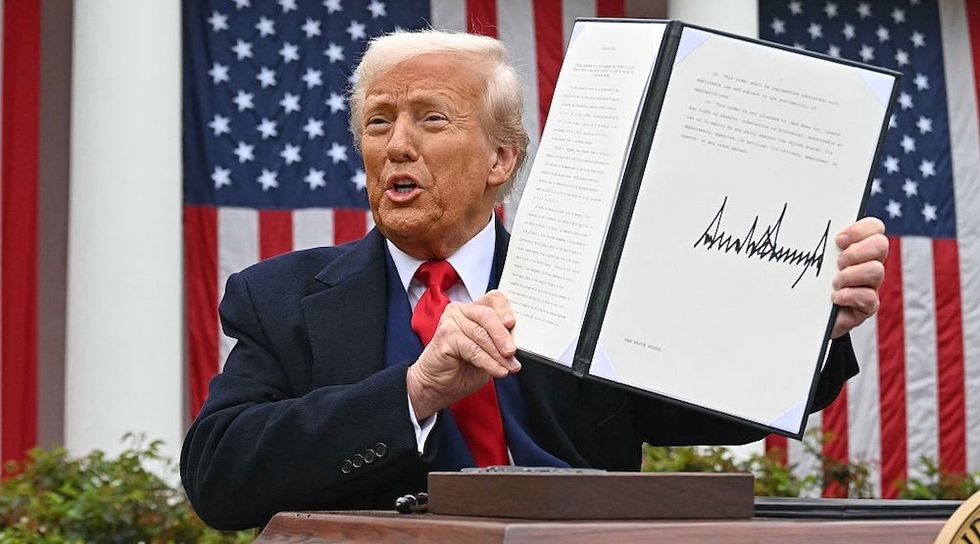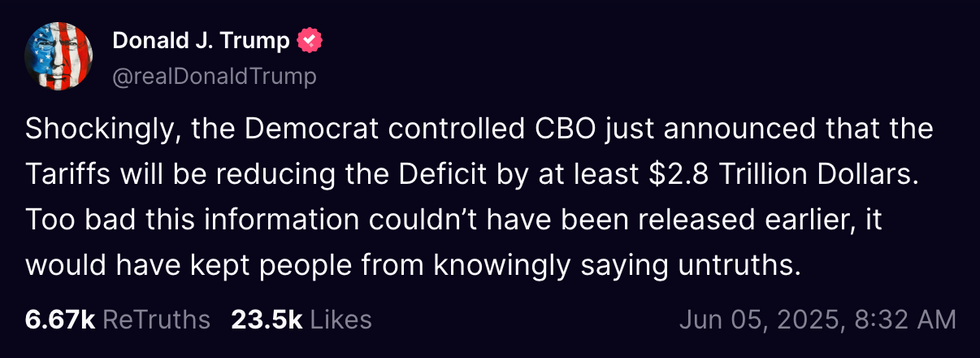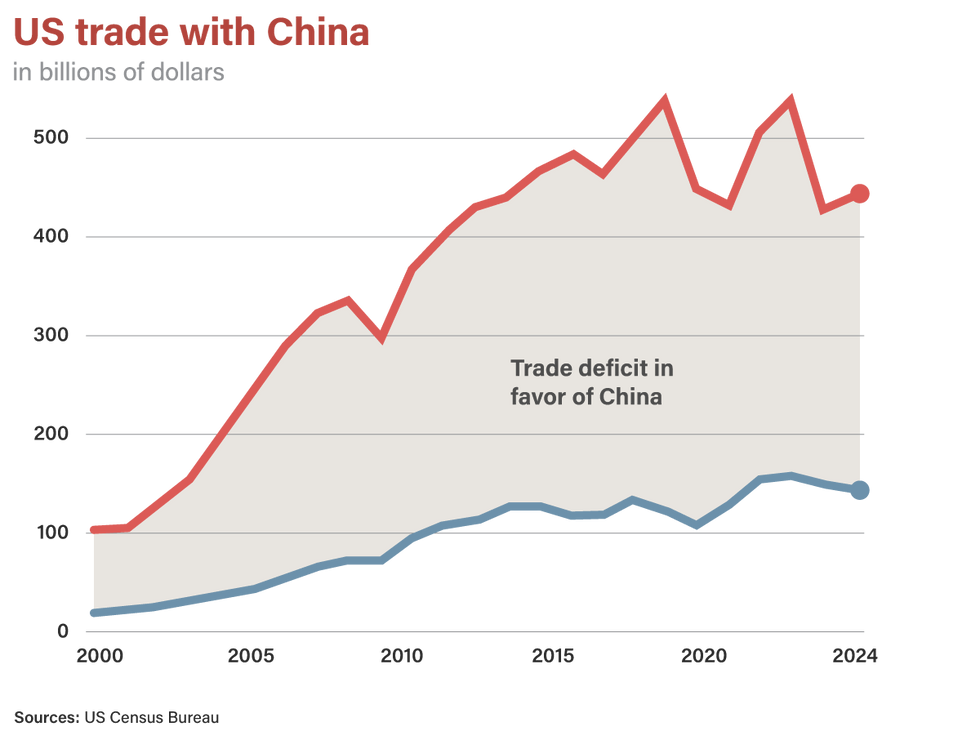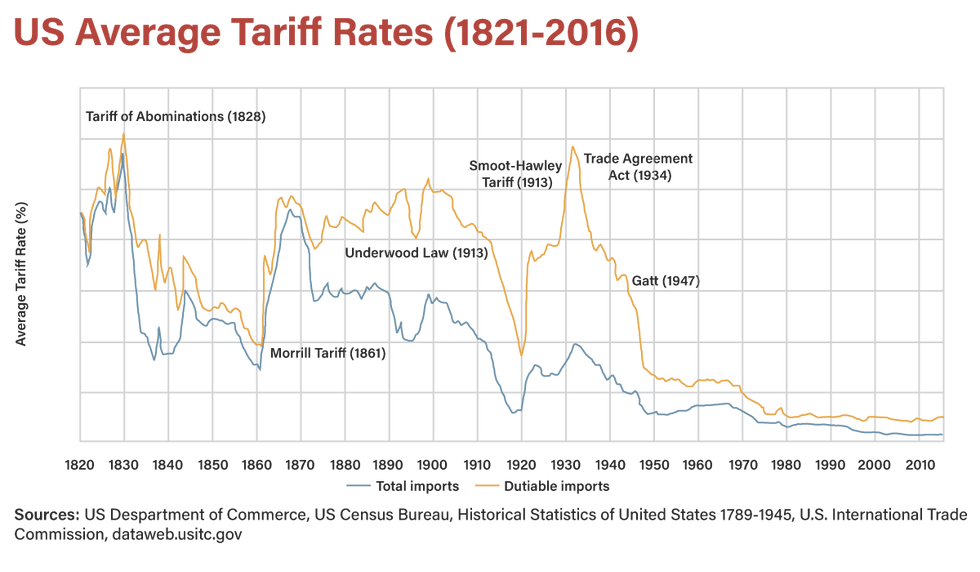Trump’s tariffs are working — now comes the ‘marshmallow test’ | Blaze Media
The Congressional Budget Office released a report Wednesday detailing the budgetary and economic impact of President Trump’s tariffs. The top-line result: Even the Democrat-controlled CBO concedes that tariffs will reduce the deficit over the next decade.
Trump has every reason to celebrate. Tariffs shrink the deficit in one of two ways. They either raise revenue directly — as tariffs are a form of tax — or they do so indirectly, by reshoring industry and expanding GDP.
History suggests both outcomes are likely. But if Trump stays the course and keeps tariffs high and stable, the United States could seize the opportunity of a generation: reindustrialize the economy, grow GDP, and restore prosperity for our grandkids.
The marshmallow test goes nationalIn the 1960s, Stanford psychologist Walter Mischel ran an experiment on self-control. Children were given a choice: Eat one marshmallow now or wait and receive two later. Those who delayed gratification generally fared better in life. Intelligence and future success correlated with restraint.
The implications extended beyond childhood. Researchers found similar behavior in animals, with more intelligent species — like crows — choosing delayed rewards.
Delayed gratification builds successful investors, entrepreneurs, and nations.
No one pretends tariffs deliver instant gratification. They don’t. They aren’t supposed to.
Tariffs function much the same way. They impose short-term pain in exchange for long-term gain. Like the marshmallow test, this moment asks whether Americans will accept some present discomfort to secure a far more prosperous future.
Fortunately, patience pays. Economic logic and historical evidence both show that tariffs expand the gross domestic product and create jobs over time.
What the trade deficit revealsIn 2024, America posted a net trade deficit of $918 billion. That figure represents more than a statistic. It reflects real, physical production now taking place elsewhere — mostly in China.
The math is simple: If Americans didn’t buy those goods from abroad, they would need to produce them at home.
Reshoring that production would raise GDP accordingly. When demand remains steady and supply shifts from overseas to domestic producers, GDP rises.
Demand drives supply. That’s basic economics.
This principle played out throughout American history. For over a century, high tariffs protected domestic industry. America’s economy grew faster than the global average. Consumption increased. Industrial output soared. Not until the 1970s, when the country embraced so-called “free trade” and abandoned the gold standard, did growth begin to stagnate.
Industrial production also benefits from increasing returns to scale. The more you produce, the cheaper each unit becomes. Part of the reason Chinese goods seem inexpensive lies in our own underproduction. As American firms ramp up supply, the cost gap narrows.
Financing habits support this trend. Americans fund trade deficits by selling assets or issuing debt. Those mechanisms would remain available in a closed trade system. True, consumers might get less “bang for their buck” in the short term, but the willingness to spend wouldn’t change.
Most Americans will continue to consume, no matter where production occurs. That behavior ensures demand will remain steady — providing the economic incentive for supply to shift back home.
Unused capacity, untapped opportunityAmerica’s industrial potential remains far from exhausted. Millions of citizens remain unemployed or underemployed. Hundreds of billions of dollars in productive capital sit idle.
The infrastructure exists. The labor pool exists. The only thing missing has been the incentive to build again. Or more accurately, the disincentive to rely on foreign labor.
The United States thrived for generations as a self-sufficient manufacturing power. It can do so again.
RELATED: Without tariffs, the US is defenseless in an economic war

Production follows consumption. That truism holds in both individual and national economies. No one works because they love harvesting wheat or running a forge. People work because they want to eat, live, and flourish.
In a globalized economy, countries can consume without producing. But once that system breaks — or gets reshaped by political will — production must rise to meet domestic demand. It cannot work the other way around.
This logic exposes a hard truth: America’s trade deficit reflects lost potential. We haven’t stopped consuming. We’ve just stopped building.
Trump’s tariffs aim to reverse that trend. By shrinking the trade deficit, the policy raises GDP. With production comes employment. With employment comes prosperity.
The patience to winNo one pretends tariffs deliver instant gratification. They don’t. They aren’t supposed to.
Tariffs offer a national test of will. Do Americans want long-term sovereignty, security, and wealth badly enough to endure a temporary adjustment? Or will they flinch the moment cheap consumer goods rise in price?
This question lies at the heart of the national debate. And the outcome will shape whether America reclaims its manufacturing base — or continues hemorrhaging power to rival nations.
The evidence favors success. But only if we stay the course.
Conservatives and nationalists should recognize what’s at stake. Tariffs don’t just serve economic goals. They advance a moral imperative — to rebuild the country we inherited and preserve it for those who follow.
The marshmallow test may sound childish. But its lessons hold: The future belongs to those who can delay gratification today to build something greater tomorrow.
America stands at that threshold now. As I show in “Reshore: How Tariffs Will Bring Our Jobs Home and Revive the American Dream,” reindustrialization isn’t a fantasy. It’s within reach. But it requires courage, consistency, and sacrifice.
Trump’s tariffs have set the stage. The numbers now support the policy. The question remains: Will the American people pass the test?
Let’s hope so. Because this country doesn’t belong only to us. It belongs to our children, our grandchildren, and every generation still to come.


